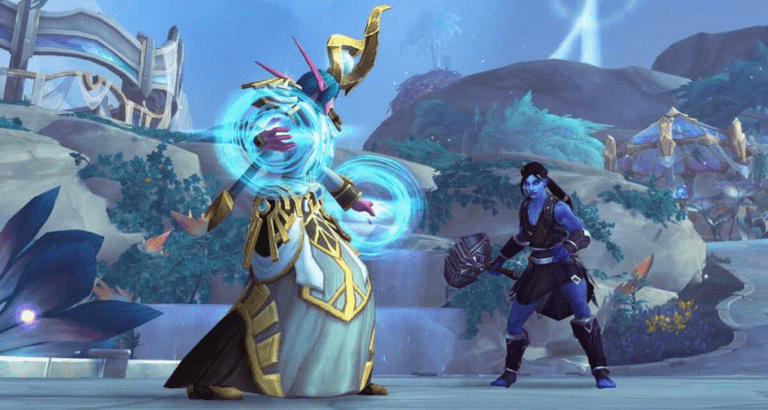In a world where smartphones have become ubiquitous, mobile games have carved out a massive share of the global entertainment industry. But while millions of players tap away on screens, enjoying everything from puzzles to immersive RPGs, few stop to think about how these games generate revenue.
Behind the scenes, developers and publishers rely on strategic planning and experimentation with mobile game monetization models to make these titles not only engaging but profitable.
This article dives deep into them – helping developers, marketers, and business owners alike understand the mechanisms that drive revenue in the mobile gaming ecosystem.
From freemium strategies and in-app purchases to ads and subscriptions, we’ll explore the most popular and emerging monetization frameworks, their challenges, and their potential. For those looking to create, publish, or improve mobile games, this guide will offer technical clarity, practical insights, and an insider’s perspective grounded in experience.
Read: How does Minecraft make money since its launch?
Mobile game monetization models: the big four
Every successful game starts with a vision, but sustaining it financially depends on choosing the right monetization model. First off, these ways are not just about inserting ads or offering virtual items: they are strategic frameworks that define how a game captures value from its audience without compromising player satisfaction or game quality.

These models must strike a delicate balance between accessibility and profitability. While users expect free content and seamless gameplay, developers need to secure revenue streams to support ongoing development, updates, and customer service. The key lies in selecting a model that aligns with a game’s mechanics, player base, and long-term goals.
1. Freemium: the backbone of modern revenue
One of the most popular mobile game monetization models is the freemium model. Here, the core game is available for free, but players can purchase optional enhancements, virtual goods, or additional content. This structure lowers the barrier to entry and helps games reach a broad audience quickly, which is essential in today’s competitive mobile landscape.
Under this model, in-app purchases become the main revenue driver. Developers can offer cosmetic upgrades, gameplay boosts, or convenience features. For example, a player might buy gems to speed up construction in a city builder or acquire skins for characters in a battle royale. However, maintaining fairness and avoiding a pay-to-win stigma is crucial. When implemented correctly, the freemium model can encourage long-term engagement and consistent revenue flow.
2. In-app advertising: a core strategy
In-app advertising represents another cornerstone of mobile game monetization models. This method generates income by displaying ads during gameplay or at natural stopping points, such as between levels or during loading screens. There are various ad formats, including banner ads, interstitial ads, and rewarded video ads, each offering a different user experience and revenue potential.

Rewarded ads are particularly popular among developers and players alike. In this format, users choose to watch an ad in exchange for in-game rewards like extra lives or currency. This voluntary exchange enhances user satisfaction while boosting revenue. The key to success with in-app advertising lies in smart placement and frequency, ensuring that ads do not disrupt gameplay or alienate users.
3. Subscription models: a growing force
While less common than freemium or ad-supported models, subscriptions are gaining ground nowadays. In this structure, players pay a recurring fee, weekly, monthly, or annually, for access to premium features, exclusive content, or an ad-free experience.
Subscriptions offer predictable revenue for developers and consistent value for users. They work particularly well for games that release frequent updates, new content, or community-based events. Players who are deeply invested in a game’s ecosystem are more likely to see the value in a subscription, especially if it enhances their gameplay or provides a competitive edge.
4. Hybrid models: the most flexible
Hybrid monetization strategies combine elements from multiple models, creating a customized approach tailored to each game’s audience and design. For instance, a game might use a freemium model as its core, integrate rewarded ads for additional engagement, and offer a subscription tier for dedicated players.

This adaptability is one of the reasons hybrid models are becoming increasingly common, given the fact they allow developers to diversify income sources and mitigate risks associated with relying on a single stream. Additionally, they provide players with more options, accommodating both casual users and those willing to invest more time and money.
The role of data in optimizing monetization strategies
Behind every successful monetization strategy is data. Analytics play a central role in refining mobile game monetization models by revealing how users interact with a game, where they drop off, and what drives their spending behavior. By analyzing user behavior, developers can fine-tune game design, adjust pricing strategies, and experiment with ad placements or in-app offers.
A/B testing, in particular, is an invaluable technique for optimizing monetization. By testing different versions of ads, offers, or gameplay mechanics, developers can identify what resonates best with their audience. Over time, these insights can dramatically improve retention and revenue, helping games remain competitive in an ever-evolving market.
Why understanding all of that matters

For studios, developers, and publishers, this is not just about making money: it’s about sustainability, growth, and creating games that can thrive in a crowded market. The right monetization strategy can extend a game’s lifecycle, deepen user engagement, and fuel innovation across updates and future titles.
Moreover, knowledge of monetization models is vital when forming partnerships, pitching to investors, or scaling a studio. A well-planned strategy demonstrates foresight, professionalism, and commitment to delivering both quality entertainment and business results.
At Main Leaf, we’ve spent years working alongside developers and publishers to refine monetization strategies that align with creative visions and market realities. Our team understands the technical, artistic, and business sides of game development, which enables us to support our partners through every phase of production. Whether in full development or co-development settings, we focus on crafting games that are not only visually and mechanically excellent but also financially viable.
Final thoughts
The world of mobile gaming continues to evolve – and so do the strategies for generating revenue. Understanding and mastering mobile game monetization models is essential for anyone looking to succeed in this dynamic industry. From freemium and ads to subscriptions and hybrid models, each approach has its strengths and challenges.
The most successful games are those that blend innovation, user engagement, and strategic monetization without compromising the player experience. By embracing the right model and continually refining it through data and feedback, developers can achieve both creative and commercial success.
If you’re exploring ways to enhance your game’s monetization strategy or need a partner to bring your mobile vision to life, our team at Main Leaf is ready to help. With years of experience, diverse skills, and a passion for excellence, we’re here to craft high-quality games that captivate and convert. Explore more insights like this on our blog or reach out to discover how we can support your next project.

